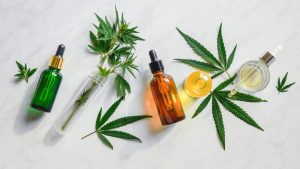Articles / Vaping restrictions to make things worse?

0 hours
These are activities that expand general practice knowledge, skills and attitudes, related to your scope of practice.
0 hours
These are activities that require reflection on feedback about your work.
0 hours
These are activities that use your work data to ensure quality results.
These are activities that expand general practice knowledge, skills and attitudes, related to your scope of practice.
These are activities that require reflection on feedback about your work.
These are activities that use your work data to ensure quality results.
In recent weeks, 45 critics of the government’s impending vaping restrictions have petitioned members of parliament to rethink the policy, contending that the crackdown will only make the black market worse.
Policy details have remained scant since Health Minister Mark Butler announced plans to ban vapes from being sold outside of pharmacies, while simultaneously loosening the criteria for GPs to prescribe nicotine vapes.
In 2021, Australia became the world’s only country to make it illegal to get nicotine vaping products without a prescription—but with only about one in 20 GPs authorised to prescribe, research suggests that most nicotine vapers procured their e-cigarettes through other means. For example, in 2022, 58% of Victorian vapers said they usually vaped nicotine, but only 9% had a script.
These new proposed regulations have been lauded by groups such as the RACGP, the AMA, Cancer Council and the National Health and Medical Research Council and more — but many addiction experts, harm reduction advocates and public health and tobacco control specialists have expressed major concerns.
Behind the scenes, experts at the Australian National Advisory Council on Alcohol and Other Drugs agonised over how to advise the health minister of their concerns that the ban on vape sales outside of pharmacies would backfire—according to internal emails that were released under a freedom of information request and published by the Sydney Morning Herald in July.
In one excerpt released by the SMH, Queensland Network of Alcohol and other Drug Agencies chief executive Rebecca Lang said the additional restrictions “will likely only make the problem worse.”
She argued that the 2021 policy which limited nicotine vaping liquids to prescription-only had inadvertently but ‘entirely predictably’ led to a bigger unregulated market with more potent nicotine and more young people accessing it.
In the published emails, Professor Nicole Lee of the National Drug Research Institute worried that the policies might making smoking cigarettes more attractive, and said banning or severely restricting substances has historically had “significant unintended consequences.”
“We know from a long history of drug prohibition – like alcohol prohibition in the 1920s -that banning or restricting vaping could actually do more harm than good. Banning drugs doesn’t stop people using them – more than 43% of Australians have tried an illicit drug at least once. And it has very little impact on the availability of drugs,” she wrote in The Conversation.
“The black market makes drugs more dangerous because there is no way to control quality. And it makes it easier, not harder, for teens to access them, because there are no restrictions on who can sell or buy them,” she continued.
“It may seem counterintuitive, but the way to reduce the black market is to make quality-controlled vapes and liquids more widely available, but restricted to adults. If people could access vaping products legally, they wouldn’t buy them on the black market and the black market would decline,” Professor Nicole Lee of the National Drug Research Institute wrote in The Conversation.
Dr Colin Mendelsohn, founding chairman of the Australian Tobacco Harm Reduction Association, is among those petitioning against the regulations. He concurs with Professor Lee.
“What we know from decades of experience with illicit drugs is that if you try and ban them, they find a way of getting to the market because people want them, and what happens is they become more potent, and they’re sold to young people. That’s called the iron law of prohibition. It’s a well-known phenomenon, and it happens with every drug,” Dr Mendelsohn said.
“There’s no way that the government’s going to be able to ban vaping-if people want it they’ll get it, the criminal gangs will find ways to import it.”
“If you keep it restricted like that, of course the black market will spring up and it’ll thrive because people will think well, I can’t get it legally, easily, and in the black market, I can buy it anywhere around the corner.”
Professor Emily Banks, head of the Centre of Epidemiology for Policy and Practice at Australian National University, and the author of this review of electronic cigarettes and health outcomes that was commissioned by the NHMRC to help inform the policy, pushes back hard on that idea.
“At the moment. Australia has a massive black market. And it’s not even a ‘black’ market because 80% of 14 to 17 year olds from the Generation Vape study said it was easy to get hold of vapes — so, really, it’s kind of like a pink market,” Professor Banks said.
“In the UK, where e cigarettes are available as consumer goods, they estimate that about one third of their market is illicit. So just having things available as consumer goods doesn’t stop illicit markets. What stops illicit markets is enforcement.”
On that front, the TGA seems to be flexing some of its enforcement muscles. In June it issued infringement notices totalling $588,840 to four TSG shops in Sydney for attempting to import nicotine vaping products.
Professor Nick Zwar, chair of the RACGP’s smoking cessation advisory group, is cautiously hopeful that the regulations will help reduce youth vaping, while still making e-vapes available for those who’ve struggled to quit with other means.
“The challenge will be effective regulation to not allow a black market and currently we have illegal vaping products coming into the country in very large numbers. So we have a black market at the moment,” Professor Zwar says.
“It’s substantial, and use has been growing, particularly for disposable vaping products…They’re very high in nicotine, they’re not well manufactured… So we have a black market now. And the changes in regulation are aimed at helping to not have a black market, but still provide access for people who want to use nicotine vaping for the purpose of smoking cessation. Now, whether it will work it remains to be seen.”
In a Healthed survey last month, about one in five GPs reported that when nicotine vaping became prescription only, most of their patients accessed them on the black market instead.

However nearly one third of GP respondents said in free text responses that they do not have any patients who vape, but this is likely an under-estimate.
“We’re probably not in the habit of asking about vaping like the way we ask about tobacco smoking. It’s not a question that prompted in the software yet,” Professor Zwar explained.
“The uptake of vaping has been so rapid— it’s a fairly recent phenomenon— that I don’t think it’s a routine thing that we ask about,” Professor Zwar said. “So unless you ask, people probably wouldn’t tell you.”
Dr Mendelsohn is particularly concerned that regulations which make vaping harder to access could also result in more people smoking — and 8% of GPs in Healthed’s survey noted this trend after prescriptions were required for nicotine vapes.
“It is hard to justify making vapes very difficult to access when deadly cigarettes are freely available. It undoubtedly means that some smokers will continue smoking instead of switching to the safer alternative,” Dr Mendelsohn told Healthed.
Of course, that’s the point of making it easier for GPs to prescribe — but he predicts that in practice, they’ll remain reluctant.
“The reality is that only 8% of Australia’s 1.3 million vapers have a prescription and vape legally. Less than 5% of GPs write nicotine prescriptions and most are very misinformed about vaping,” Dr Mendelsohn said.
“The proposed crackdown will allow all GPs to prescribe nicotine without having to become Authorised Prescribers. However, I would anticipate very few will take part.” – Dr Colin Mendelsohn
Professor Zwar also said that while removing the authorised prescribing requirement might result in some more GPs prescribing, it’s unlikely to lead to a dramatic rise.
“I don’t know that that’s necessarily the biggest barrier— I think it’s more uncertainty about the role in smoking cessation, the safety, how it fits and practicalities about how to do it too, because it’s not terribly straightforward to know how to write a prescription and how to choose a starting dose and how to titrate and how long and all of those sorts of things,” Professor Zwar said.
“It’s not surprising that GPs are unsure about what the role is to support smoking cessation, particularly given that they’re not approved products. They’re not medicine.”
Still, he rejects the argument that barriers to accessing nicotine vapes will result in more people turning to combustible tobacco. “That’s not the only thing they could do, they could turn to nicotine replacement therapy, which is available over the counter. They could go to the doctor and get prescribed NRT or another smoking cessation pharmacotherapy,” he said, adding that the intention is to make nicotine vapes available for those who have not been able to quit smoking using other methods.
“There’s always risks and it’s a balancing of risks,” Professor Zwar said. “Now I’m not saying the situation is perfect. Clearly there needs to be more doctors involved for that to be an easy option for the community…but the idea of the medical access framework is that if people want nicotine vaping products to quit smoking, there’s a pathway for them.”
Professor Banks also takes a nuanced view. She says the risk that the crackdown on vaping could lead more people to smoking does need to be taken seriously. “It’s about getting the balance of access for people who are really genuinely using it to quit smoking, and avoiding this burgeoning addiction issue,” she said.
“We have to be careful that people don’t go on to smoking. And the way to deal with that, is first of all, we need support for people who are vaping to quit vaping.”

MHT For Women With History or Risk of Cancer

Muscle Health in the Elderly

GLP-1s For OSA

Oral Corticosteroid Stewardship For Asthma – Why it is Important



Strongly agree
Somewhat agree
Neutral
Somewhat disagree
strongly disagree
Listen to expert interviews.
Click to open in a new tab
Browse the latest articles from Healthed.
Once you confirm you’ve read this article you can complete a Patient Case Review to earn 0.5 hours CPD in the Reviewing Performance (RP) category.
Select ‘Confirm & learn‘ when you have read this article in its entirety and you will be taken to begin your Patient Case Review.
Menopause and MHT
Multiple sclerosis vs antibody disease
Using SGLT2 to reduce cardiovascular death in T2D
Peripheral arterial disease
